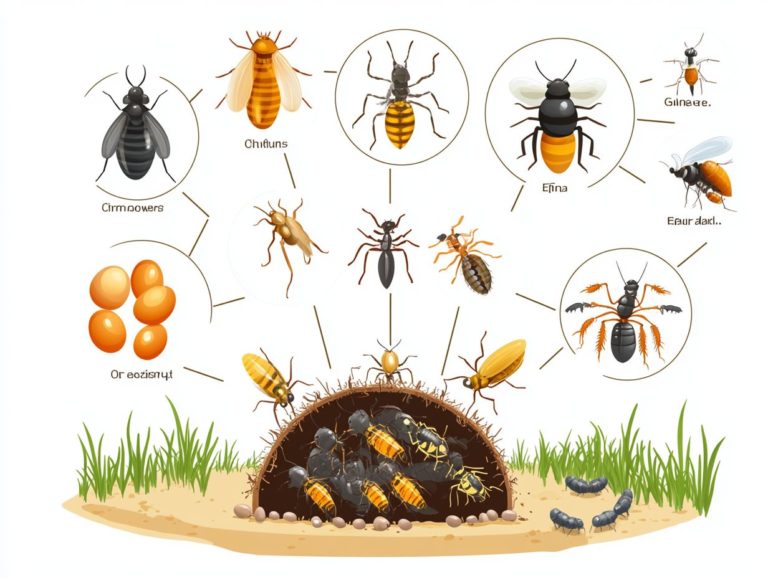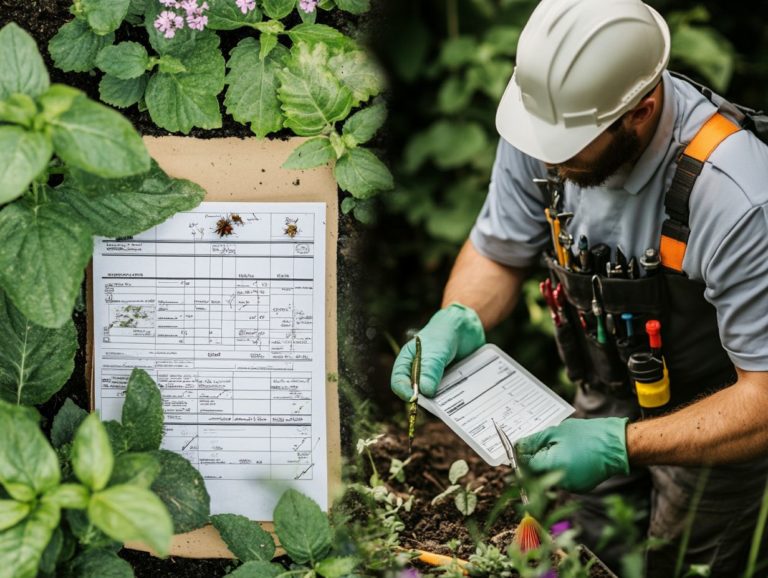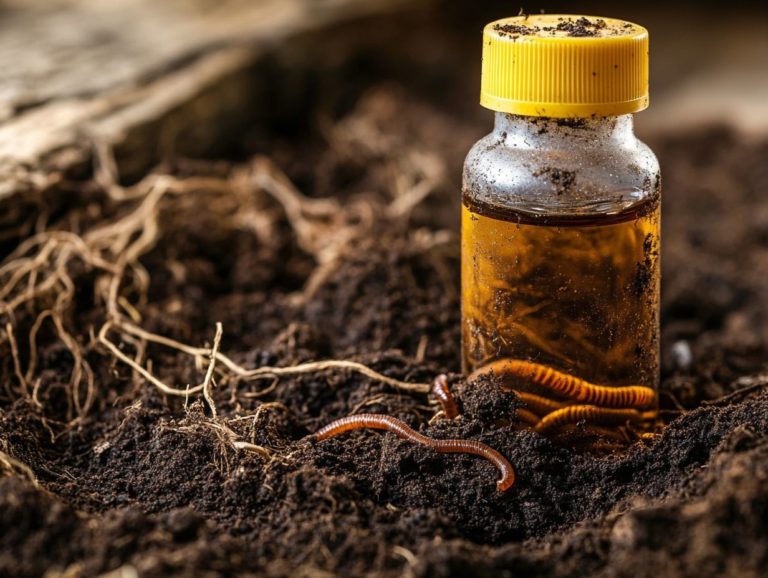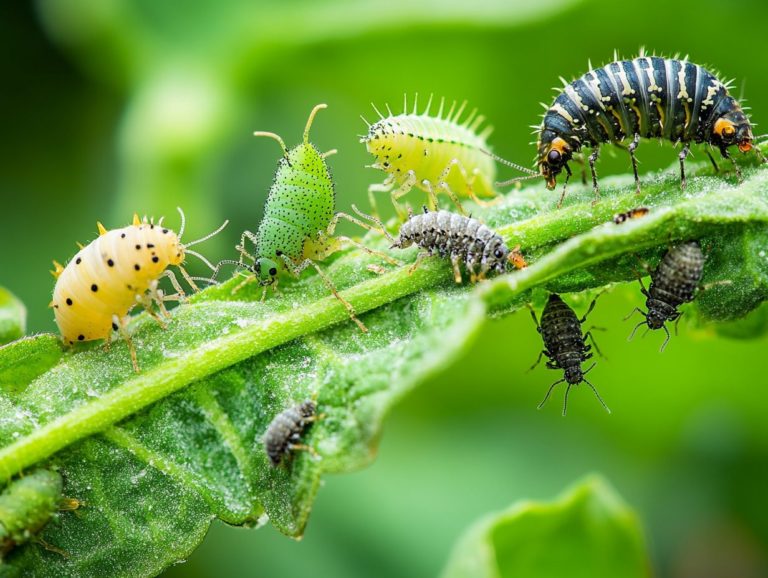5 Must-Know Facts About Beneficial Nematodes
Nematodes might not be the first creatures that spring to mind when considering pest control, but these microscopic allies can profoundly influence your garden and soil health.
This article delves into the fascinating realm of beneficial nematodes, exploring their various species and their vital role in natural pest control. You ll also find expert tips for effective application.
You will also discover where to find high-quality nematodes that will elevate your gardening endeavors. Discover how these tiny warriors can transform your garden today!
Contents
Key Takeaways:
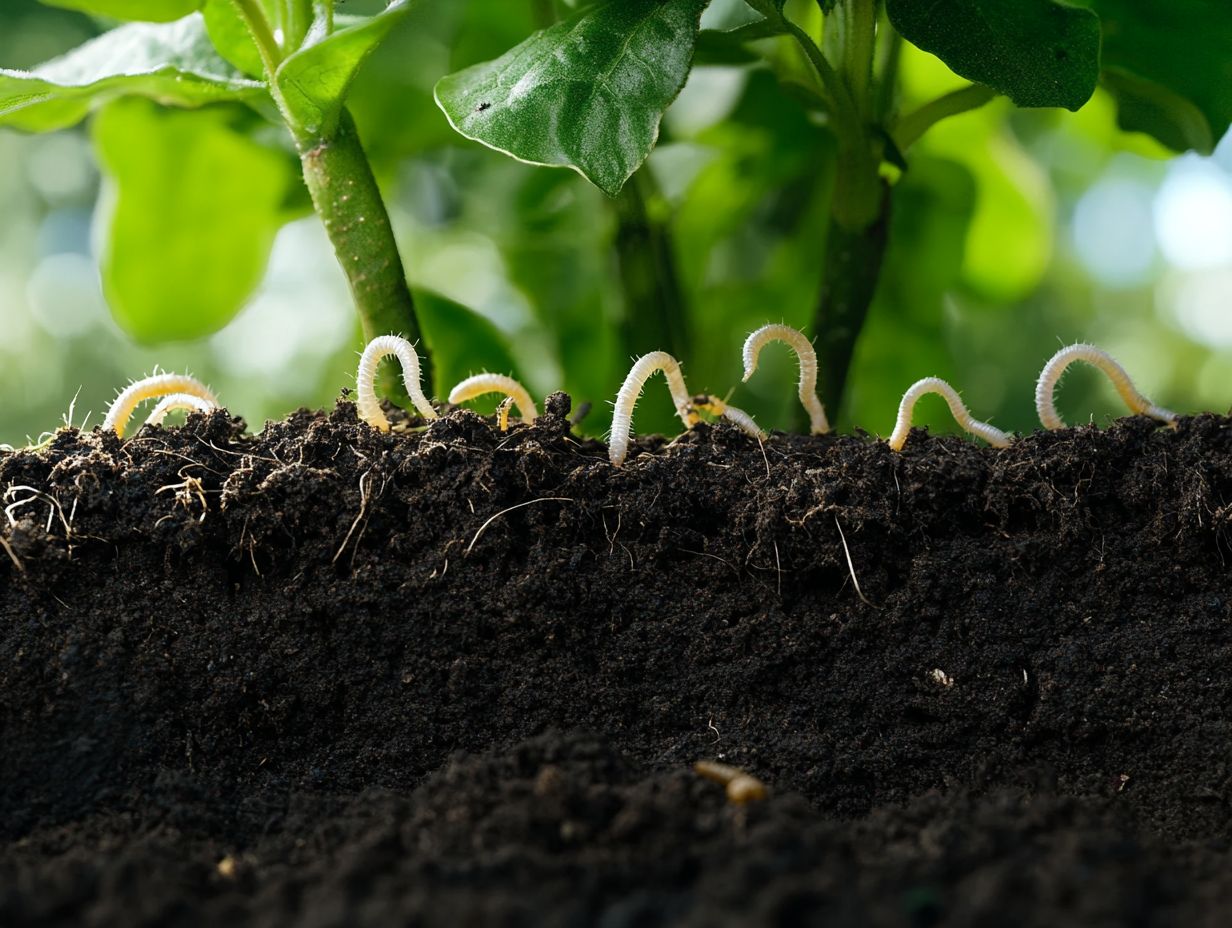
- Nematodes are small, worm-like organisms that can help control pests and improve soil health.
- There are different types of beneficial nematodes, each with their own unique benefits and traits.
- Using beneficial nematodes can provide natural pest control and soil improvement for your garden.
What are Nematodes and How do They Work?
Nematodes are fascinating microscopic roundworms that thrive in various ecosystems. They play a crucial role in biological control, especially in combating soil-dwelling pests and insect larvae.
Among the many types, beneficial nematodes specifically entomopathogenic varieties like Steinernema and Heterorhabditis utilize bacteria that live together with nematodes, helping them fight pests. This offers you an environmentally safe alternative to chemical pesticides.
To effectively manage pests in your agricultural crops and home gardens, understanding their life cycle and ecological roles is essential.
These tiny organisms typically measure between 0.3 to 2.5 millimeters in length. They feature elongated bodies that can range from transparent to slightly opaque, depending on the species.
You can find nematodes in a wide array of habitats, including freshwater, marine environments, and soil, where they thrive in both aerobic and anaerobic conditions.
Their life cycle usually includes several juvenile stages, progressing from eggs to adults. They play significant roles in nutrient cycling and decomposition.
As beneficial nematodes interact with soil microbes and other organisms, they actively manage pest populations, safeguarding plant health and promoting sustainable agricultural practices. Their effectiveness as natural pest controllers highlights the importance of integrating these remarkable organisms into your pest management strategies.
Types of Beneficial Nematodes
Beneficial nematodes belong primarily to two distinguished families: Steinernema and Heterorhabditis. Each family encompasses a variety of species, uniquely adapted to specific ecological niches and an array of insect pests.
The differences among these nematodes are substantial, influencing their host range, effectiveness, and compatibility with different environmental conditions. This diversity allows them to play pivotal roles in the realm of biological control.
Identifying and Understanding Different Species
Identifying different species of beneficial nematodes, such as Steinernema and Heterorhabditis, is crucial for your pest management strategy. Each species boasts unique characteristics and compatibility with specific insect pests, making this knowledge critical.
These nematodes exhibit distinctive morphological traits, from body size to the structure of their mouthparts. These traits directly influence their hunting mechanisms and habitat preferences.
For instance, some species flourish in moist soil environments, making them particularly skilled at locating and infecting subterranean pests like grubs and root weevils.
By understanding their ecological niches and the specific insect pests they target, you can optimize the application of these nematodes in your pest control efforts. This approach boosts the power of biological methods and cuts down on chemical pesticide use. This means a healthier garden for you and the environment!
Ready to boost your garden s health? Get started with beneficial nematodes today!
Unlock the Power of Beneficial Nematodes for a Healthier Garden!

Using beneficial nematodes in your pest management strategy brings a wealth of advantages. These tiny warriors offer effective natural pest control, enhance soil health, and elevate pesticide safety, positioning them as a critical element of a system that combines different ways to control pests.
Unlike chemical insecticides, beneficial nematodes deliver a biological control approach that significantly reduces environmental impact while championing sustainable agricultural practices.
Key Benefits
Beneficial nematodes are remarkable allies in your garden, known for their natural pest control capabilities. They specifically target insect larvae and other soil-dwelling pests, promoting soil health and contributing to the overall well-being of the ecosystem.
These microscopic organisms act as biological agents, diligently seeking out and infecting pest larvae through a fascinating process involving the release of symbiotic bacteria. Once they infiltrate their host, these bacteria multiply, leading to the demise of the larvae and significantly curbing pest populations, which enhances the vitality of your garden.
By engaging in nutrient cycling, beneficial nematodes transform organic matter into forms that plants can readily access, fostering an environment rich in microbial activity. This process not only bolsters plant health but also nurtures a balanced ecosystem, underscoring their essential role in sustainable pest control strategies.
How to Use Beneficial Nematodes
To effectively harness the power of beneficial nematodes in your pest management strategy, understand their application methods, the optimal environmental conditions they thrive in, and the precise timing for their release, particularly regarding the amount of water in the soil.
Apply infective juveniles the young stage of nematodes that are effective against pests at the ideal growth stage to significantly enhance their effectiveness and achieve superior pest control.
Application Tips
- Mix beneficial nematodes with water for a spray application, creating optimal conditions for successful host finding and nematode emergence.
- Use soil drenching to allow these tiny allies to penetrate the root zone more effectively.
- Utilize irrigation systems to enhance their distribution to targeted areas where pests are likely to dwell.
To achieve the best results, maintain suitable soil moisture levels; too dry or too saturated can hinder nematode activity. Monitoring soil temperatures is equally important, as these organisms thrive within specific ranges. Apply them during peak pest activity to ensure they’ll have the highest impact.
Consider these factors to boost how well beneficial nematodes work in your pest control.
Where to Buy Beneficial Nematodes

Purchasing quality beneficial nematodes is essential for effective pest management, as their efficacy largely hinges on the reliability of the sources and the production techniques utilized by suppliers.
With numerous options available, choose vendors who provide high-quality, viable nematodes specifically adapted to your local environmental conditions.
Finding Quality Nematodes for Your Needs
Finding quality nematodes for pest control can make a huge difference in your gardening efforts! It demands your attention to detail regarding suppliers and their nematode production practices. Ensure that the nematodes are EPA registered and tailored to meet your specific pest management needs.
It’s essential to check the credentials of nematode suppliers, paying close attention to their certifications and compliance with industry standards. Genuine feedback from previous customers can provide invaluable insights, helping you assess product effectiveness and reliability.
When selecting nematodes, matching the right species to the specific pests and environmental conditions you re facing is crucial. The success of your pest management strategy hinges on this compatibility, as not all nematodes are created equal when it comes to targeting pests.
Choose suppliers with strong quality assurance practices. This choice boosts your chances of successful pest control, ensuring your efforts are both efficient and environmentally responsible.
Frequently Asked Questions
What are beneficial nematodes?
Beneficial nematodes are a type of microscopic roundworm that lives in soil and can be used for pest control in gardens and crops.
How do beneficial nematodes control pests?

Beneficial nematodes enter the bodies of pest insects and release bacteria that kill the insects from the inside out.
Are beneficial nematodes harmful to humans or pets?
No, beneficial nematodes are harmless to humans, pets, and plants. They only target specific pest insects and do not cause any harm to other organisms.
Where can I buy beneficial nematodes?
You can purchase beneficial nematodes online or at garden supply stores. Make sure to buy from a reputable source to ensure their effectiveness.
When is the best time to release beneficial nematodes?
The best time to release beneficial nematodes is in damp soil, preferably in the morning or evening when temperatures are cooler. Avoid releasing them in direct sunlight or during hot, dry weather.
How often should I use beneficial nematodes for pest control?
This depends on the severity of the pest infestation and the type of nematode used. It is generally recommended to release them every 4-6 weeks for continuous pest control.
Don’t wait! Start using beneficial nematodes today for effective pest control.

